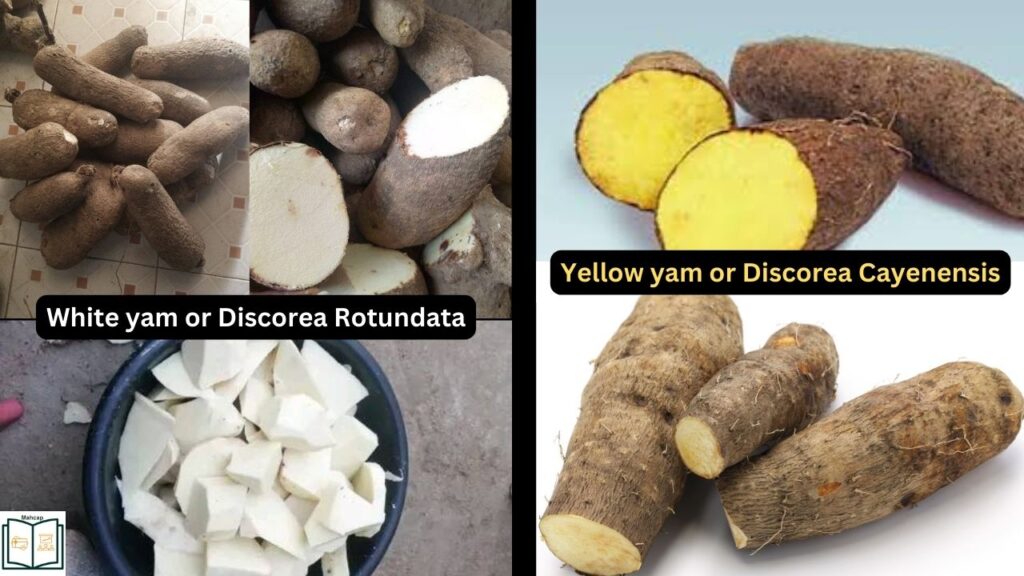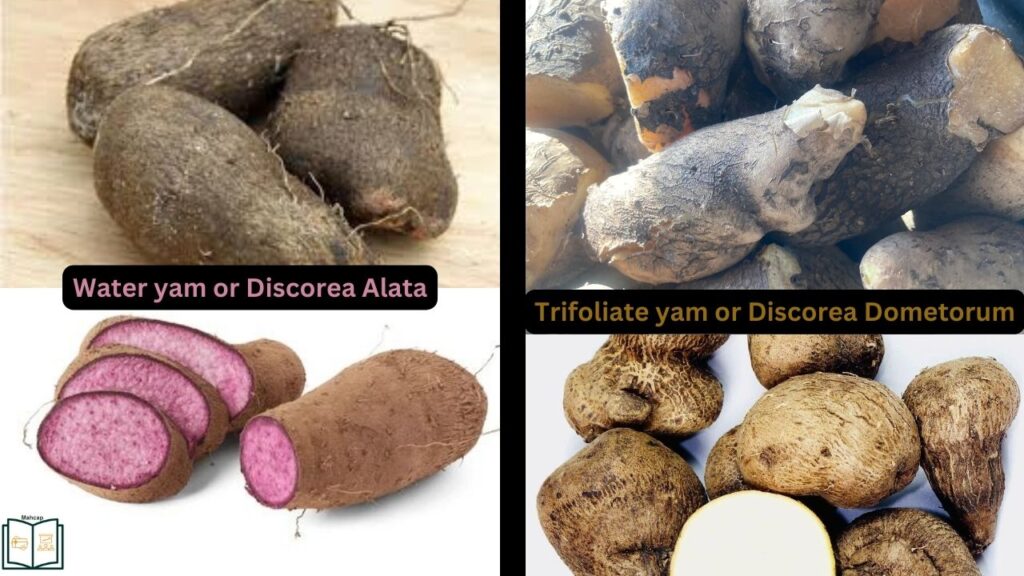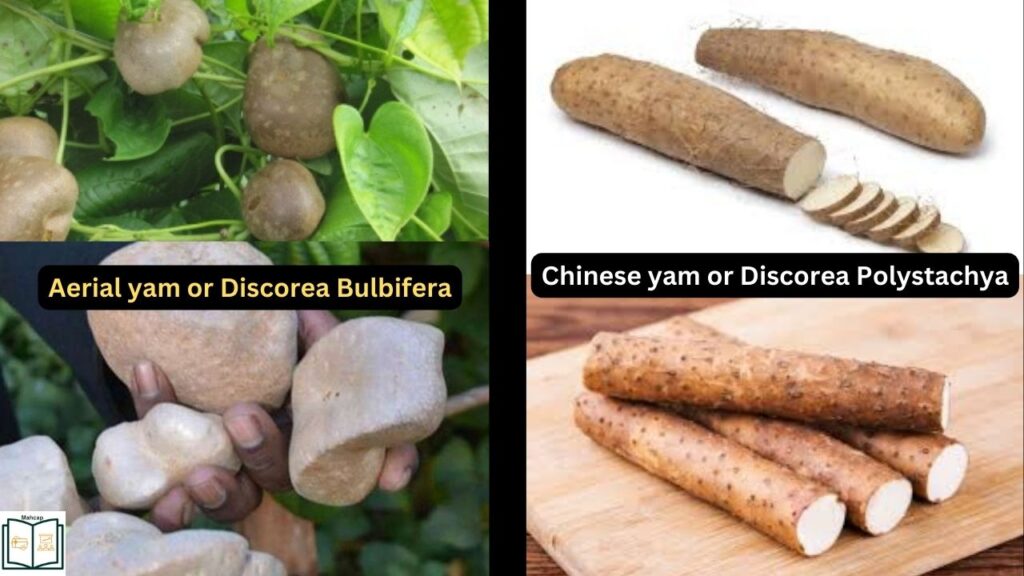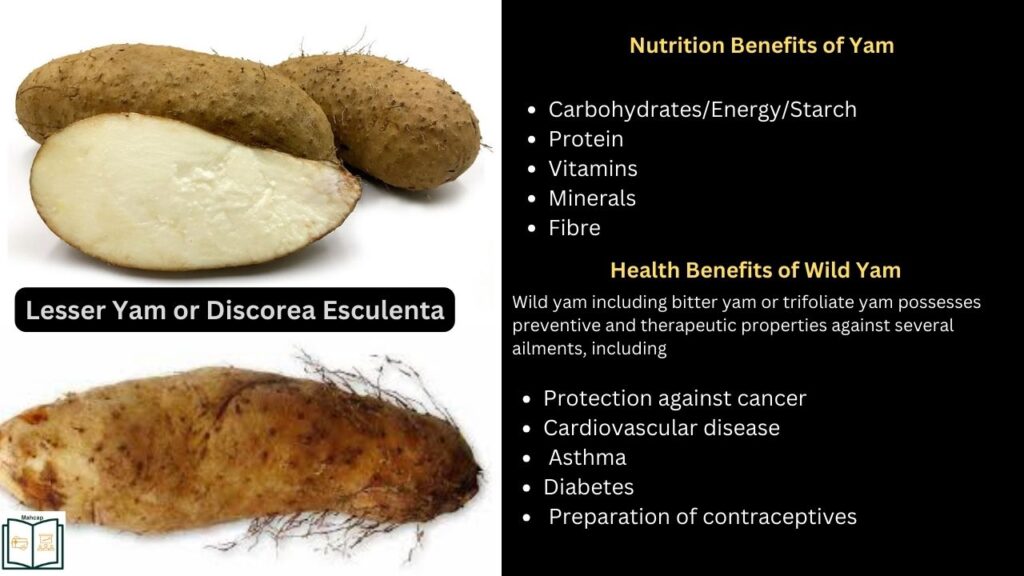Types, Uses, and Benefits of Yam
Yam (Dioscorea species) is an important food security crop in West Africa. It is recognized as the fourth most important tuber after potatoes, cassava, and sweet potatoes, cultivated for its food, economic, cultural and medicinal value.
Yam Production and Consumption
Most of the world’s yam production comes from West Africa, representing 97 percent, with Nigeria producing about 69 percent, making it the largest global yam producer. Ghana is the second largest producer of yam globally, followed by Cote d’Ivoire, Benin, and Togo1. In Ghana, yam is produced in commercial quantities, and the Brong Ahafo region is the leading producer of yam, followed by the Northern region.
Yam is estimated to feed millions of people and is extremely important for at least 60 million people, including rural producers, processors, and consumers in West Africa.
Importance of Yam Production
- Employment and income: Yam is a cash crop and its production is a source of food security and employment to about 60 percent of farmers who grow yam as a primary source of livelihood.
- Food consumption: Global annual yam consumption is 18 million tons, with 15 million tons consumed in West Africa2. Yams are consumed in the form of boiled, roasted, baked, or fried yams.
- Foreign Exchange: Ghana is the world’s leading exporter of yam for foreign exchange. It exports yam to Europe, America, and other African countries like Mali, Burkina Faso, and Niger.
- Cultural purposes: Yam plays a key role in socio-cultural rituals among many ethnic groups across Africa. Yam is used in many African ceremonies, including marriage, harvest, and fertility festivals.
Types of Yam
More than 600 species of yam, scientifically known as Dioscorea species, have been identified worldwide. However, only about seven have commercial relevance and are mostly consumed. These include.
- White yam or white Guinea yam or pona (Discorea rotundata)
- Yellow yam or sand paper (Discorea Cayenensis)
- Water yam or, purple yam, or Ghana water yam (Discorea alata)
- Trifoliate yam or African bitter yam (Discorea dumetorum)
- Aerial yam or air potatoes (Discorea bulbifera)
- Chinese yam (Discorea polystachya)
- Lesser yam (Discorea esculenta)
White, water, and trifoliate yams are native to West Africa. However, the yam species of economic importance in Ghana and West Africa include white yam, yellow yam, water yam, and aerial yam. White or guinea yam or pona is the most popular and preferred.

White Yam (Discorea Rotundata) or Pona
Reports suggest that White yams or, guinea yams or pona (Discorea rotundata) were first domesticated in West Africa in about 5000 BC. Pona, or white yam, is one of the most preferred yams in Ghana because of its good taste and cooked texture(2). The tuber is roughly cylindrical, the skin smooth and brown, and the flesh usually white and firm.
Yellow Yam or Sand paper (Discorea Cayenensis)
Yellow yam derives its name from its yellow flesh, caused by carotenoids (naturally occurring pigments found in plants). It is also native to West Africa and very similar to the white yam in appearance. Yellow yam has a more extended period of vegetation and a shorter dormancy than white yam. White and yellow yams are the most economically valuable yams in West Africa.
White and Yellow Yam Fufu
Also, the textural quality of white and yellow yams, called African guinea yams, exhibits higher firmness, elastic recovery, gumminess, and cohesiveness, thus making it suitable for yam fufu. Yam fufu prepared from yams stored for five months showed elevated firmness but reduced stickiness compared to pounded yams prepared at harvest.
Also, pounding yam with its boiled water significantly improves its nutrient content compared to pounding it with cold water. This is because the nutrients leach into the boiling water during the boiling process. Roasting, frying, and preparing yam to amala drastically improve the macronutrient content of the yam, and boiling yam significantly reduces all nutrients.

Water Yam (Dioscorea Alata)
Water yam originates from Southeast Asia and is the world’s most widely spread discorea species. The tuber flesh is white and “watery” in texture. Water yam has a high yield, high multiplication ratio and better tuber storability than the preferred indigenous white yam. The texture of its flesh is usually not as firm as white yam and is less suitable for preparing the most popular food products from yam (fufu, pounded yam and boiled yam) in the West African region. However, water yam has significantly higher moisture and protein content with higher peak time and pasting temperature than white yam. However, water yam’s starch content, swelling power, and pasting viscosities or thickening are comparatively lower than white yam3.
Trifoliate Yam or Bitter Yam (Dioscorea Dumetorum)
Trifoliate or bitter yam originates in Africa, and its tubers have a bitter flavour. A severe post-harvest hardening (PHH) phenomenon restricts the storage ability of trifoliate yam, which starts within the first 24 hours after harvest and renders tubers inedible. Tubers of trifoliate yam are rich in protein and well-balanced in essential amino acids with easily digestible starch4.
The hard-to-cook defect of trifoliate yam tubers is categorized into reversible and irreversible. Reversible hardness is associated with phytate, while irreversible hardness is associated with lignin. The irreversible component is the major component of trifoliate yam tuber hardening. Unlike the other yams, staking is not necessary to maintain yield, and the tubers grow near the surface of the soil. This saves labour and allows for mechanization of harvest(4).

Aerial Yam (Discorea bulbifera)
Aerial yam (Dioscorea bulbifera) is a native of Asia and subsequently introduced to Africa. It is also known as air potato or Fur’gma in Dagbani. Aerial yam has two edible tubers (underground tubers and aerial bulbils) produced simultaneously by the same plant. It is called air potato because it produces potato-like aerial bulbs in the leaf axils of the twining stems. Some varieties are edible and are cultivated as food crops in most hot, humid tropical regions of the world5. The species is not as popular as other yams and is utilized mainly by the rural dwellers at periods of food scarcity rather than consumed out of preference.
It has a shorter harvesting period (about six months after planting) than other yam species. It grows worldwide due to its adaptability to different environmental and edaphic conditions.
However, certain cultivars of aerial yam are wild and inedible due to toxic or antinutritional principles at concentrations or amounts beyond the threshold safe level recommended for human consumption after processing(5).
Chinese Yam (Discorea Polystachya)
Chinese yam (Dioscorea polystachya ) originated in China and was domesticated in the Song Dynasty. It is an underutilized orphan tuber crop, but in China, it has been used in traditional medicine and food to strengthen stomach function, alleviate anorexia (a serious and potentially life-threatening eating disorder characterized by an extreme fear of gaining weight and a distorted perception of body image), and treat diarrhea6.

Lesser yam (Discorea Esculenta)
Lesser yam (Discorea esculenta) is the most nutritious among the yam species and is mainly grown in India, Vietnam, the Pacific Islands, and the Philippines. Lesser yam is also grown for its flavour and short maturity period. Various studies have shown that lesser yam is rich in carbohydrates and can be substituted for rice or alternative carbohydrates because of its good glycemic index (how quickly and how much a food raises blood glucose levels after consumption ) value. It is also rich in crude fat, crude fibre, starch and sugar. The flour of lesser yam also has a high potential to be used as a substitute for wheat flour because it has the swell ability of wheat and is by American wheat standards(1).
Nutrient Composition of Yam
- Carbohydrates/Energy/Starch: Yams are rich in starch, carbohydrates, and gross energy. Because of their high starch content, they are used in animal food and feed, instant noodles, and drinks.
- Protein: It contains crude protein.
- Vitamins: The Carotenoids (plant pigment) in yellow yam are rich in vitamin A.
- Minerals: Yams are reported to contain relatively high levels of minerals, including Potassium, Sodium, Phosphorus, Calcium, Magnesium, Copper, Iron, Manganese, Zinc and Sulphur.
- Fibre: it contains crude fibre as well.
Health benefits
Some yam species, especially wild ones, including bitter or trifoliate yams, contain diosgenin, a pharmacologically active component. Diosgenin is one of the most costly and critical steroidal drugs used worldwide. It possesses preventive and therapeutic properties against several ailments7, including.
- Protection against the development of cancer
- Osteoporosis (a medical condition characterized by weakened bones, making them more prone to fractures and breaks)
- Cardiovascular disease (complications of the heart and blood vessels)
- Nephritis (a medical term used to describe inflammation of the kidneys)
- Asthma
- Diabetes
- Preparation of contraceptives
- Treatment of various genetic disorders (Ayoola et al., 2008).
- Reduce skin inflammation
By: Huzeima Mahamadu
Assisted by Ayisha Gunu Mohammed!
- Lawal, A. I., Akinoso, R., & Afolabi, F. O. (2023). Nutritional, antinutritional and bioactivity of raw and thermal processed cultivars (five) of aerial yam bulbils. Food and Humanity, 1, 1040–1045. https://doi.org/10.1016/j.foohum.2023.08.018 ↩︎
- Brunnschweiler, J. (2004). Structure and texture of yam (Dioscorea spp.) and processed yam products [PhD Thesis, ETH Zurich]. ↩︎
- Adepoju. (2012). Effects of processing methods on nutrient retention and contribution of white yam (Dioscorea rotundata) products to nutritional intake of Nigerians. African Journal of Food Science, 6(6). https://doi.org/10.5897/AJFS11.192 ↩︎
- Medoua, G. N., & Mbofung, C. M. (2006). Hard-to-cook defect in trifoliate yam Dioscorea dumetorum tubers after harvest. Food Research International, 39(5), 513–518. ↩︎
- Mulualem, T., & Weldemichel, G. (2013). Agronomical evaluation of aerial yam (Dioscorea bulbifera) accessions collected from South and Southwest Ethiopia. Greener Journal of Agricultural Sciences, 3(9), 693–704. ↩︎
- Zeng, X., Liu, D., & Huang, L. (2021). Metabolome profiling of eight Chinese yam (Dioscorea polystachya Turcz.) varieties reveals metabolite diversity and variety specific uses. Life, 11(7), 687. ↩︎
- Ayoola, G. A., Coker, H. A., Adesegun, S. A., Adepoju-Bello, A. A., Obaweya, K., Ezennia, E. C., & Atangbayila, T. O. (2008). Phytochemical screening and antioxidant activities of some selected medicinal plants used for malaria therapy in Southwestern Nigeria. Tropical Journal of Pharmaceutical Research, 7(3), 1019–1024 ↩︎
